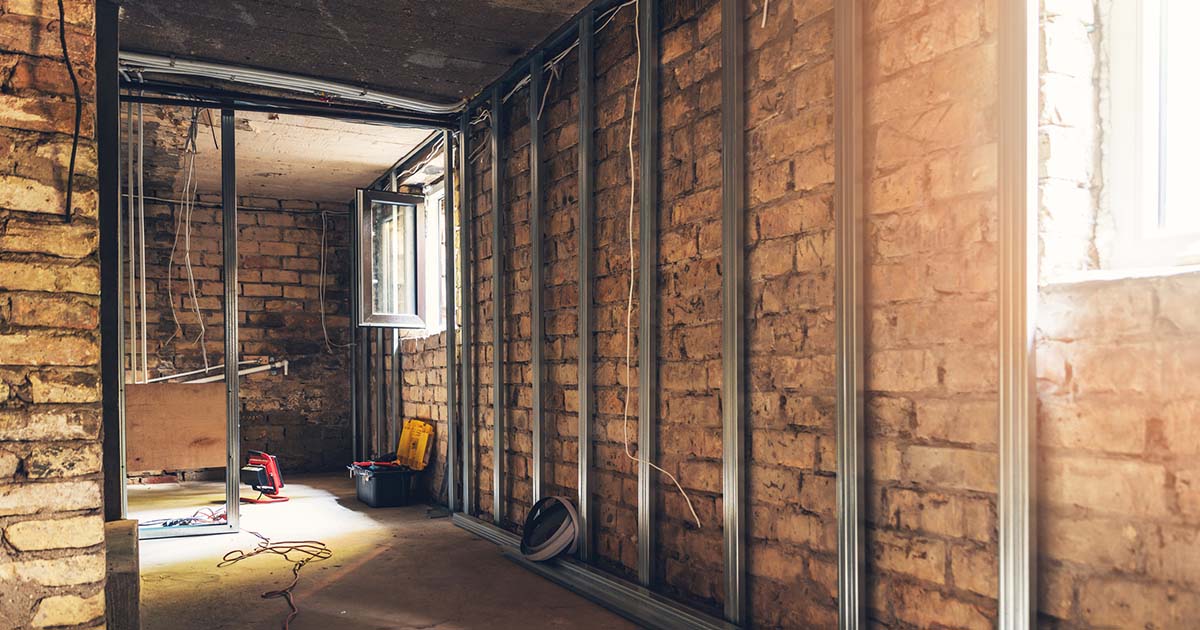Tips to Protect Your Home's Foundation

Your foundation should last for many years as long as you keep water and roots away from it. You can damage your foundation by something as seemingly benign as the way you landscape your yard.
Use these tips to protect your home’s foundation.
Grade your yard correctly
Kent Foundation Repair explains that “runoff is one of the most important things to pay attention to as you tend to your garden. Grading your landscape is a great way to protect your foundation from water.”
Make sure that your landscape slopes away from your house:
- Assess the slope every year and make sure water flows away from your home’s foundation. “It should be graded at least 6 inches in 10 feet (from the base of the foundation out toward the property’s perimeter),” notes Kent Foundation Repair.
- Put the end of a level where the ground meets the foundation of your house. Keep it straight and measure the gap between the bottom and the ground. There should be a two-inch gap for a 24-inch level. Multiply by five to figure out if there is enough of a slope around your home. Check two areas on each side of your home.
- Walk around your house 10 feet from the foundation and look for areas that are not graded correctly. Use a rake and soil to fix the grade.
Choose where you put flower beds carefully
Move flower beds away from your home’s foundation. The absorbent topsoil that is so great for your plants is not good for your foundation because it will collect moisture during rainfall and when you water your garden. Depending on the age and quality of the foundation, this accumulation of water can affect its integrity. Bisson Expert suggests that “you can raise the slope of the terrain near the foundation and ideally not install any flower beds on the side of the foundation that is most exposed to bad weather.”
Maintain your gutters
Making sure water is not flowing from your gutters towards your foundation is another important part of protecting your home’s foundation. You should clean out your gutters at least twice a year. Make sure to dispose of the debris away from your home’s foundation.
Gutter Helmet says that “whenever you undertake gutter cleaning, you should inspect your gutters to make sure they don’t have any cracks, holes, or gaps; and also check to see if they are pitched correctly so water flows through them properly.”
Make sure gutters drain at least 5 feet away from the foundation of your house or into rain barrels. If your gutters drain right next to your house, install gutter extensions.
Keep tree roots away from the foundation
If there are trees 10-20 feet away from your foundation, you should consider removing them. “Their root system will keep growing out and may begin shifting your foundation. If removal is not an option, a root barrier could be an alternative solution,” says Kent Foundation Repair. When deciding which trees to add to your yard, figure out how far away from the house they should go so the canopy and roots do not touch the foundation or house.
Monitor the moisture content of the soil
Check for excess moisture from sprinkler systems and add mulch or wood chips to flower beds to help maintain the right level of moisture. The moisture of the soil should be uniform throughout your property.
The soil around your home can be too wet but it can also be too dry. You should water the soil around your foundation during dry spells because “expansive soil around your foundation could shift, contract during dry spells, and adversely affect your foundation,” says Kent Foundation Repair.
Build a swale
You can build a swale, or ditch, much like by the side of the road, to direct water away from your home’s foundation and towards a safer area for it to drain. The ditch should be three or four times wider than it is deep and can lead to a rain garden or basin with quick-draining soil. You can line the swale with rocks, gravel, or perforated pipe and add plants around it.



.jpg?300x300)